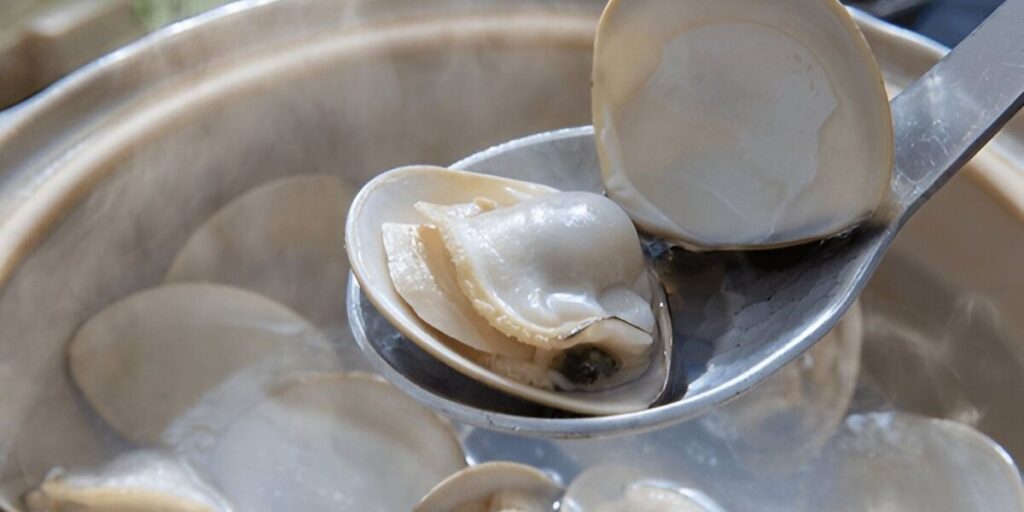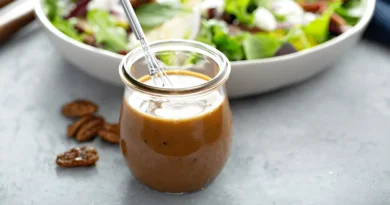Oyster Milk: The Best Guide To Its Flavor And Benefits
Oyster milk is becoming a favorite in kitchens everywhere. It’s made from oyster juice that’s been filtered. This gives dishes a deep, briny taste without the texture of whole oysters.
Chefs and home cooks love using oyster milk to boost the flavor of seafood, soups, and sauces. It’s packed with minerals and amino acids from oysters, making it special.
Oyster milk adds a unique umami flavor to dishes. It’s perfect for both classic Asian braises and new, creative recipes. See how it makes both old and new dishes taste amazing.
Table of Contents
What Is Oyster Milk and How Is It Made
Oyster milk is not dairy but a briny liquid from oysters. It adds a deep umami flavor to dishes. To use it well, you need to know where it comes from and how it’s made.
Understanding the Composition of Oyster Milk
Oyster milk has proteins, minerals like zinc and calcium, and natural salts. These give it a rich, savory taste. Its unique flavor makes it special in Asian and coastal cooking.
The Traditional Extraction Process
Artisanal methods include these steps:
- Clean fresh oysters, removing shells carefully.
- Crush shells and oyster meat gently to avoid breaking cell walls.
- Soak the mixture in filtered water, then strain through cheesecloth.
This slow process keeps the liquid pure. Chefs call it “the soul of coastal kitchens.”
Modern Methods of Producing Oyster Milk

Today, producers use centrifuges to separate liquid from solids efficiently. Brands like Coastal Essence use sterile filtration systems. Home cooks can make a basic oyster milk recipe with a blender and fine mesh strainer.
Whether traditional or modern, the aim is the same: to capture oyster milk’s unique taste. Try these methods to make your own batches.
The Nutritional Profile of Oyster Milk
Oyster milk is packed with nutrients that make it different from regular milk or plant-based options. It’s full of protein, minerals, and trace elements. For instance, 100ml of oyster milk has about 3g of protein, just like cow’s milk. But it has more zinc, up to 5mg per serving.
Key components in oyster milk nutrition include:
- Zinc: Supports immune function and wound healing.
- Calcium: Contributes to bone health, similar to dairy sources.
- Omega-3 fatty acids: Promotes heart health and brain function.
- Vitamins B12 and D: Vital for energy production and bone strength.
| Nutrient | Oyster Milk | Cow’s Milk | Almond Milk |
|---|---|---|---|
| Protein (g/100ml) | 3 | 3.2 | 1 |
| Zinc (mg/100ml) | 5 | 0.4 | 0.1 |
| Calcium (mg/100ml) | 150 | 120 | 30 (fortified) |
The amounts of these nutrients can change based on the oyster type and how it’s processed. Wild oysters usually have more minerals than farmed ones. Also, keeping the processing simple helps keep more nutrients in the milk.
Knowing about oyster milk’s nutrition helps you see it as a good choice. It’s rich in zinc and omega-3s, making it great for seafood lovers. Plus, it’s a natural source of minerals your body needs, without any added sugars or preservatives.
Culinary Applications of Oyster Milk in Various Cuisines

Learning to use oyster milk in cooking opens up new possibilities. It adds a salty flavor to dishes, making them both savory and sweet. Here’s how to use it:
Oyster Milk in Seafood Dishes
Use oyster milk to enhance seafood flavors. Poach shrimp in a light broth made with oyster milk. Or, baste grilled fish with its creamy texture. A tasty oyster milk recipe mixes it with white wine and herbs for a smooth fish sauce.
Using Oyster Milk in Sauces and Soups
Make rich sauces by blending oyster milk with butter and shallots. For soups, combine it with leeks and potatoes for a creamy texture. Remember, thinning with broth helps avoid richness. Try this oyster milk recipe for a creamy clam chowder:
- Sauté onions in butter.
- Add minced clams and oyster milk.
- Simmer until thickened, season with paprika.
Oyster Milk as a Flavor Enhancer
Enhance umami in risottos by adding a splash during cooking. Use it to deepen roasted vegetables like asparagus. For pasta, mix it with fettuccine and parmesan.
Incorporating Oyster Milk into Desserts
Drizzle oyster milk over chocolate fondue or blend into panna cotta. A unique oyster milk drink mixes it with coconut water and lime for a tropical flavor. It’s also great in sea-salt caramel ice cream.
| Application | Example Dish | Tip |
|---|---|---|
| Seafood | Scallop velouté | Pair with citrus |
| Sauces | Beurre blanc | Reduce heat to preserve creaminess |
| Desserts | Sea salt panna cotta | Balance sweetness with vanilla |
Start with small amounts, like ¼ cup, to avoid overpowering dishes. Always store leftover oyster milk in airtight containers for up to three days.
Health and Beauty Benefits of Oyster Milk

Oyster milk is more than just a cooking ingredient. It offers oyster milk health benefits that are impressive. It’s packed with zinc, calcium, and proteins. These help boost your immune system, keep your skin healthy, and improve your overall well-being.
Key benefits of oyster milk include:
- Immune support: Zinc boosts white blood cell activity, helping your body fight infections.
- Antioxidant protection: Natural compounds combat oxidative stress linked to aging and disease.
- Digestive aid: Enzymes may ease digestion and promote gut health.
For your skin, oyster milk benefits for skin are clear. It hydrates and boosts collagen production. Its proteins moisturize dry skin, and peptides help your skin stay elastic. Many skincare products now include it.
| Benefit | Key Component | Application |
|---|---|---|
| Anti-aging | Peptides | Incorporated into face creams |
| Immune support | Zinc | Consumed as a dietary supplement |
| Wound healing | Antioxidants | Used in topical treatments |
For ages, oyster milk has been prized for its energy and vitality. Modern studies show it might help reduce inflammation and make your skin glow. But, always talk to a doctor before using it for health reasons.
Conclusion: Embracing Oyster Milk in Your Kitchen
Oyster milk is a versatile ingredient with rich umami flavors and health benefits. It’s great in sauces, soups, and even desserts. Its creamy texture and mineral-rich profile make it a standout in any pantry.
Start by substituting it in classic recipes. Try adding it to stir-fries or creamy soups. You can also use it in baked goods or cocktails. Always choose high-quality oyster milk drinks from trusted brands for freshness and purity.
Remember to store it properly: refrigerate unopened products and use within a few days after opening. You can find brands like Maritech or Asian grocers’ selections at specialty markets or online on Amazon. Make sure to check labels for no additives to keep it natural.
Chefs worldwide are getting creative with oyster milk, from artisanal drinks to fusion recipes. Its potential in cooking is vast, offering endless possibilities. Begin with small experiments and grow your skills. Your taste buds will appreciate it. Oyster milk is more than a trend; it’s a flavorful upgrade for everyday cooking.









